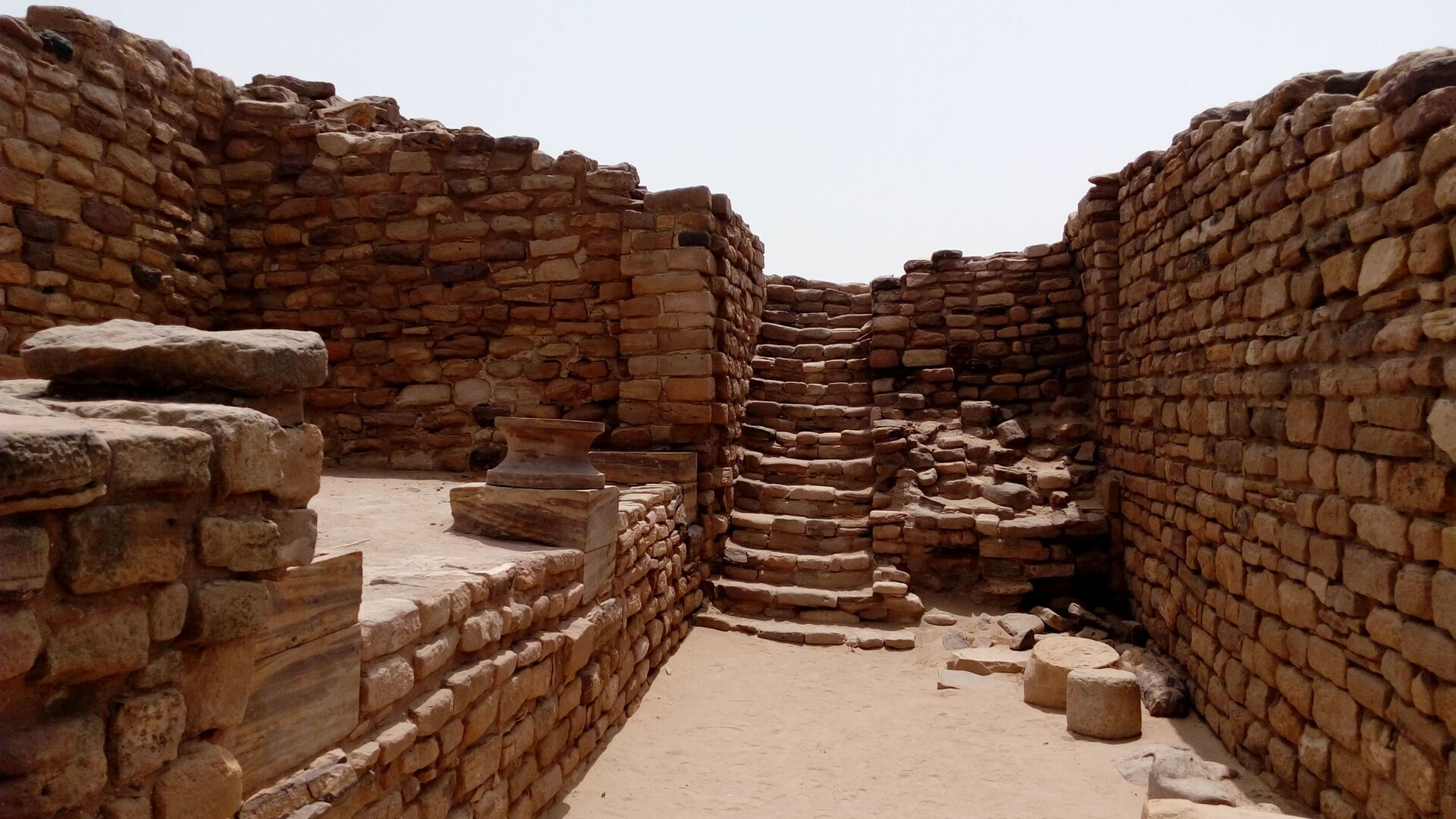Time Capsule: Ancient City in India’s Gujarat Gets UNESCO World Heritage Status
13:51 GMT 27.07.2021 (Updated: 10:37 GMT 19.07.2022)

CC BY-SA 4.0 / Nizil Shah /
Subscribe
Dholavira is among the most prominent sites of the ancient Harappan civilisation in India. It's situated on Khadirbet island in the Kachachh Desert Wildlife Sanctuary in Gujarat state.
Six years after submitting its UNESCO application, the ancient archeological site of Dholavira in India dating from the 3rd to mid-2nd millennium BCE was finally been given UNESCO World Heritage status on Tuesday. India now has 40 sites protected by the United Nations agency.
Dholavira was discovered by archaeologists in 1967 and has been excavated since 1990 by the Archaeological Survey of India.
The 120-acre quadrangular city was founded between two seasonal streams, the Mansar and Manhar, and was surrounded by salt marshes.
Absolutely delighted by this news.
— Narendra Modi (@narendramodi) July 27, 2021
Dholavira was an important urban centre and is one of our most important linkages with our past. It is a must visit, especially for those interested in history, culture and archaeology. https://t.co/XkLK6NlmXx pic.twitter.com/4Jo6a3YVro
Ancient Dwellers' Hydraulic Engineering Skills Stun Scientists
The city nurtured a water conservation secret, that was recently been pieced together, and has stunned scientists for its engineering marvel. Evidence has been found that the Harappans who lived here in the 3rd millennium BC developed an amazingly advanced hydraulic system.
In 2018, a team of scientists from Indian Institute of Technology, Gandhinagar in Gujarat used Ground Penetrating Radars to scan the site. They discovered signals that indicate underground structures with an intricate system of interconnected water reservoirs, bunds, channels, drains and check dams.
It is a matter of immense pride that the @UNESCO has conferred the World Heritage tag to Dholavira, a Harappan city in Kutch. This shows the firm commitment of our Honourable Prime Minister Shri @narendramodi ji towards promoting Indian culture and heritage. https://t.co/kDxflSQG4j pic.twitter.com/DJnuBYFyNU
— Vijay Rupani (@vijayrupanibjp) July 27, 2021
The dwellers of the city knew how to reduce the turbidity of flood flow in the nearby Manhar by diverting its silt laden water and letting it pass through a number of interconnected small reservoirs to allow sediment to settle. This allowed the clean water to reach the reservoir for consumption.
City's Planned Architecture Still Puzzles
The ancient town of Dholavira had a separate area for common townsfolk along with the fortified Raj Mahal (Palace of the Ruler). There were separate dwellings for officers, with three to five rooms in each house.
4500 Years Old ( 2500 B.C) Lost Harappan Era City of Dholavira In Kutch
— indianhistorypics (@IndiaHistorypic) July 27, 2021
( Photo - Archaeological Survey of India) pic.twitter.com/hkt6XkQQCt
The city is largely planned, showcasing an architectural maturity, complete with water drains and a gradient that prevents flooding. It was a vibrant business hub and the remains of a large pearl factory were found there.




